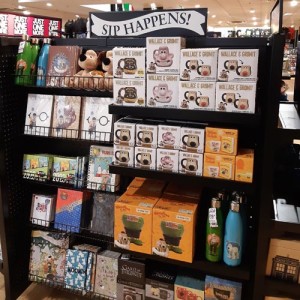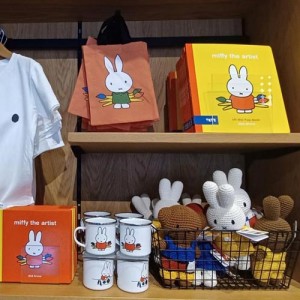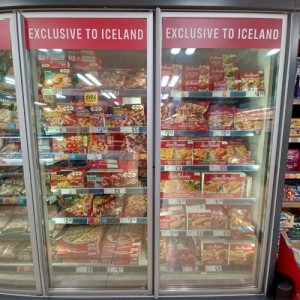Start Licensing’s Ian Downes highlights five observations from a year of looking out.
Inspired by the plethora of end of the year review shows on TV and articles in newspapers, I thought I should look back and provide a Licensing Lookout Review of the Year.
It has certainly been a busy year for looking out and there has been plenty of licensing to report on. An interesting aside is that even in the modern age of camera phones I still got some odd looks when I stop and take photos in shops – on more than one occasion I have had to say I am sending a photo to someone to check I am buying the right item rather than casing the joint for a midnight ramraid! One shop worker got particularly prickly and challenged me – he had assumed I was taking photos to send to ‘Head Office’ about his displays. I assured him his displays were fine. Hopefully 2023 will bring plenty of photo opportunities for me as I continue to Lookout and I manage to avoid receiving any banning orders in my local shops.
So here are a few observations from a year of Looking Out – five in fact – to paraphrase Elvis Costello it has been a Good Year for the Lookouts…
It has definitely be the year where licensing programmes and products created for fans have continued to come to the fore. Retailers like HMV and Forbidden Planet have developed product ranges that get under the skin of properties and really appeal to fans. They and others have really made an effort to understand what fans like and what motivates them. They have resisted the temptation to make a quick buck and move on – they see this as a long-term relationship.
Of course they are supported by IP owners, agents and licensees which also understand fandom. Product selection has improved and the quality of product is very high. Licensees like Half Moon Bay, Abysse, Pyramid, Danilo and Funko are great examples of licensees which have built licensing portfolios to service this sector.
 A great example of this in action from my own experience has been how HMV has developed a Wallace & Gromit product range with Aurora and Half Moon Bay – this experience really showed me what a focused approach at retail can deliver.
A great example of this in action from my own experience has been how HMV has developed a Wallace & Gromit product range with Aurora and Half Moon Bay – this experience really showed me what a focused approach at retail can deliver.
It helps in this case that HMV has a buying and retail team who are pop culture fans themselves – they can understand what fans want and also what fans are interested in.
Another retail sector that is thriving and is creating new opportunities for licensing is the ecommerce sector. This seems to have developed in two particular ways – firstly there are specialist retailers like TruffleShuffle, Character.com and Lost Universe which work with the licensees and licensors to create specific ranges and promotions. Again, rather like the retailers mentioned earlier, these companies really know their consumers and have become experts in relationship management. It is not a surprise that IP works well in this context as at its heart a successful IP brings an audience and a following. The ecommerce companies have become ultra efficient at servicing these communities.
A further development I have seen is more specialist companies, often start-ups, using licensing as a way of building their profile and business by working with selected licences to create exclusive products that are only available through them. These are in a range of sectors from lighting to garden products. In turn these companies work well with IP owners to build social media campaigns that promote their products and, of course, the IP itself. I see this as an opportunity for licensing that will grow in the next few years and I can imagine a new generation of ‘online only’ licensees emerging.
 Heritage licensing is also a sector that seems to be flourishing at the moment. Maybe I am more tuned into heritage licensing these days as I work with The Ashmolean Museum, but it definitely seems like a category of licensing that is attracting more interest from licensees and retailers.
Heritage licensing is also a sector that seems to be flourishing at the moment. Maybe I am more tuned into heritage licensing these days as I work with The Ashmolean Museum, but it definitely seems like a category of licensing that is attracting more interest from licensees and retailers.
Heritage brands like The RHS are blending their licensing programmes well with their retail programmes – the RHS Shop at Wisley is a great example of this kind of mixed approach and also a great showcase for the brand. Licensees like Park Agencies in the apparel category have successfully taken heritage brands into mainstream retail with a contemporary approach to design. It has also been interesting to see how heritage brands are working with IP owners to create bespoke ranges. A great example of this that I spotted earlier in the year was a range of Miffy merchandise in the gift shop at the Tate Modern.
It has also been the Year of Experiences – ‘live licensing’ is going from strength to strength; whether it’s art trails, theatre shows, escape rooms or concerts there seems no limit to how licensing can be used in this category. Monopoly Lifesized is a great example of the superscale these activations can achieve. Operators are looking for content and for ways of motivating consumers to get ‘involved’. Rather like the earlier examples, IP can bring an audience with it and an audience that is engaged. We have probably undervalued the relationship and influence IP has with consumers. When used in clever, appropriate and measured ways licensing can really transform a business and a sector. The experiential sector is a fantastic example of this and one that has significant potential for licensing.
However there is a note of caution from me. I think licensing needs to think carefully about the deals that are done, where they fit into the market and who will engage with them. Given the costs associated with the live sector it is important to take a measured approach to opportunities. The sector is switched onto licensing at the moment, but that switch could easily be turned off as quickly. While acknowledging the fresh energy in this category, it is also worth remembering that stalwart licensees like Rainbow Productions have been great ambassadors for licensing in the category over many years. A further reflection of the growing importance of this category is the fact that rights holders like Aardman have dedicated live events teams to service the industry sector.
 It has also been interesting to see how more food and drink brands are using licensing as a means to broaden their reach and amplify their brand. Some of this particularly in regards to restaurant brands is a legacy of lockdown – many restaurants look at ways they could ‘pivot’ and licensing was one form of pivot they could employ. Brands such as Bailey’s, Marmite and Guinness have a long history in this category and have a broad range of licensed products in the market. A common factor here is that these are brands with very individual brand identities and distinct flavour profiles both good attributes for licensing.
It has also been interesting to see how more food and drink brands are using licensing as a means to broaden their reach and amplify their brand. Some of this particularly in regards to restaurant brands is a legacy of lockdown – many restaurants look at ways they could ‘pivot’ and licensing was one form of pivot they could employ. Brands such as Bailey’s, Marmite and Guinness have a long history in this category and have a broad range of licensed products in the market. A common factor here is that these are brands with very individual brand identities and distinct flavour profiles both good attributes for licensing.
Iceland is a retailer that has embraced brand licensing in a very significant way running a whole range of ‘exclusive’ products with partnerships with the likes of TGI Fridays, Cathedral Cheese and Gregg’s. This is a dynamic area of licensing but one that needs a long term approach – interestingly it is a category that is often managed directly by the brand owner. It often requires careful stewardship and management.
 Finally it has also been a bumper year for street art – I am a big fan of street art and it is worth noting how often street artists use well known characters to develop street art with. For example, this year street artist Super A was commissioned to create a Shaun the Sheep art piece in Leicester as part of a festival and in locations like London’s Leake Street I have seen characters such as Bart Simpson, Daffy Duck and Snoopy being used as cornerstones for art pieces. Street art is a great example of how fan culture, art and the licensing world can crossover. If you are looking for a new place to visit I would recommend Leake Street in Waterloo – it is a real hub for street art and there are some great examples of the genre there. It might spark some new ideas and an extra bonus is it is also free.
Finally it has also been a bumper year for street art – I am a big fan of street art and it is worth noting how often street artists use well known characters to develop street art with. For example, this year street artist Super A was commissioned to create a Shaun the Sheep art piece in Leicester as part of a festival and in locations like London’s Leake Street I have seen characters such as Bart Simpson, Daffy Duck and Snoopy being used as cornerstones for art pieces. Street art is a great example of how fan culture, art and the licensing world can crossover. If you are looking for a new place to visit I would recommend Leake Street in Waterloo – it is a real hub for street art and there are some great examples of the genre there. It might spark some new ideas and an extra bonus is it is also free.
Ian Downes runs Start Licensing, an independent brand licensing agency. His Twitter handle is @startlicensing – he would welcome your suggestions for what to look out for.































